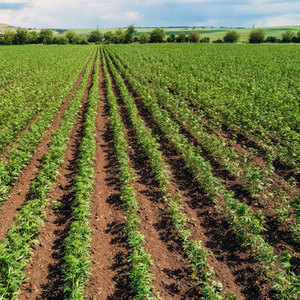The Path Forward for Hemp Renewable Fuels



December 18, 2021
BY Roger Ford
A decade ago, the U.S. biodiesel and renewable diesel industry passed a significant milestone—crossing the billion-gallon production threshold. Within four years, the industry had doubled production, surpassing 2 billion gallons. This growth in production has enabled the industry to meet the federal Renewable Fuel Standard, while creating more job opportunities and building a solid foundation for sustainable fuel production into the future. Driven by a greater focus on federal and state targets and conversion of petroleum refineries to alternative fuel refining (including biodiesel and renewable diesel), U.S. production capacity is projected to increase into 2024.
The future is bright for the biofuel and renewable diesel industry. As the industry continues this robust push to a more sustainable future—integrating biofuels and renewable fuels into the broader energy market—we create an energy transition, or a paradigm shift, into a more energy integrated future. With that, we must consider a pathway that ensures that this shift secures viable and affordable feedstock for sustained growth in the market that keeps pricing competitive.
Enter hemp into this conversation. In the hemp industry, much anecdotal evidence is presented, with as much conjecture, as to hemp’s potential as a biomass feedstock for a range of energy products, including biodiesel and renewable diesel. For several decades, hemp advocates have argued in support of hemp-based energy—ranging from pellets to advanced biofuels. If you have been in the hemp universe for exceptionally long, you have realized that hemp is both a functional and versatile plant. In 2013, Forbes Magazine ran a piece by Logan Yonavjak that stated hemp could produce approximately 25,000 products. But it likely also did not take long to realize that being in the hemp universe requires great focus to avoid being drawn off on many tangents when it comes to developing hemp-based products, including energy products.
In 1990, investigative journalist Hugh Downs of ABC’s 20/20 discussed the potential for hemp as a feedstock for energy. He found hemp could be used for energy production, such as methane, which can be readily refined to a synthesis biodiesel product, as well as biodiesel from the refined seed oil, a nearly sulfur-free product that is easily blended with petroleum diesel or used as 100% biofuel. In fact, Downs’s report stated that hemp could account for up to 90% of world’s energy needs, reducing reliance on petroleum-based fuels. Downs further said, “When Rudolph Diesel produced his famous engine in 1896, he assumed that the diesel engine would be powered by a variety of fuels, especially vegetable and seed oils. Rudolph Diesel, like most engineers then, believed vegetable fuels were superior to petroleum. Hemp is the most efficient vegetable. In the 1930s, Ford Motor Company also saw a future in biomass fuels. Ford operated a successful biomass conversion plant, that included hemp, at their Iron Mountain facility in Michigan. Ford engineers extracted methanol, charcoal fuel, tar, pitch, ethyl-acetate and creosote. All fundamental ingredients for modern industry and now supplied by oil-related industries.”
Besides the environmental benefits, being clean and cheap in their life cycle costs, biofuels have the obvious benefit of being renewable as opposed to petroleum-based fuels. Hemp’s properties have the potential to spur tremendous biofuel production—especially biodiesel and sustainable aviation fuel (SAF). Its per-acre yield of fiber and grain varieties, as well as its varietal adaptability to varying climates and soils, make the hemp plant a worthy candidate for consideration in the production of biofuels. It is this factor that makes hemp an attractive bioenergy crop. Its versatility aside, a key consideration in developing hemp as an input for energy production is the ability to generate revenue from multiple outputs. Whether using a fiber or grain variety, hemp can be effectively processed to produce dual revenues, such fiber for textiles or composite materials, materials for energy production, or grain for human or animal products and energy production. This strengthens the economic case for farmers, giving them two revenue benefits and not just one. The economic case is further strengthened when one considers the benefits that hemp brings to the carbon capture and sequestration market.
The carbon capture properties of hemp have been shown to far exceed any of the more traditional pathways to the management of atmospheric carbon, as hemp exceeds trees in its ability to absorb carbon dioxide from the atmosphere. A November 2021 article published by the National Hemp Growers Cooperative discusses research at Cambridge University that shows that “…hemp is twice as effective as trees in capturing atmospheric carbon, meaning the potential market for hemp as a crop that not only can produce sustainable materials and renewable energy but also for carbon sequestration is potentially better than other crops and trees.” Darshil Shah, senior researcher at Cambridge University's Centre for National Material Innovation, has written numerous studies that suggest hemp is one of the best CO2-to-biomass converters. It absorbs between 8 and 15 tons of biomass per hectare (approximately 4 to 7.5 tons of CO2 per acre), depending on the variety of hemp and method in which it is cultivated. That is in comparison to forestry-based carbon capture, which typically captures between 2 and 6 tons of carbon per hectare (1 to 3 tons per acre), depending on the type of trees and growing conditions.
If one accounts for the monetized value of managing atmospheric carbon, the farmer is benefitted even more in their activities. The “layered approach” to building revenue for the farmer is one that builds a stronger case for expansion of hemp production globally.
The economic and environmental case for hemp is growing stronger. The efforts of Eureka Energy Corp. and the National Hemp Growers Cooperative in their recently announced strategic partnership are focused on strengthening rural economic development by working with hemp farmers in the U.S. and globally. As a company, Eureka is partnering with the NHGC to build a supply chain for hemp that leads to bioenergy production, focused on biodiesel and SAF. Our project development efforts currently are ongoing in Kentucky, Mississippi, Missouri, the Dominican Republic, Ecuador and Paraguay. The basis for this is the incorporation of hemp for biodiesel derived from renewable natural gas.
Our business model focuses on building farming networks to supply facilities that process hemp for dual crops, such as fiber and grain use. The biomass byproducts range up to 80% of the overall yield per acre, to be gasified and refined into biodiesel or SAF. With duality in revenue and the addition of carbon credit monetization, farmers will realize robust revenue from their activities. It is our desire to build real wealth for farmers and aid in the restoration of rural economies, while fulfilling market demand for biofuels. Our commitment to creating a sustainable supply chain from seed to fuel is only enhanced by a front-end design of farming practices and plant operations that reduce carbon footprints and capture up to 100% of the CO2 being produced in the operations of our energy facilities.
The future holds immense potential for bioenergy, especially biodiesel and SAF, and hemp will be a key component in that bioenergy future. Its crop yield, climate versatility and soil adaptability all make hemp a cash crop that can rebuild, restore and rejuvenate rural economies, make national energy consumption more independent and secure, and chart a course for the environment that ensures a more sustainable future.
Advertisement
Advertisement
Related Stories
U.S. fuel ethanol capacity fell slightly in April, while biodiesel and renewable diesel capacity held steady, according to data released by the U.S. EIA on June 30. Feedstock consumption was down when compared to the previous month.
The U.S. EPA on July 8 hosted virtual public hearing to gather input on the agency’s recently released proposed rule to set 2026 and 2027 RFS RVOs. Members of the biofuel industry were among those to offer testimony during the event.
The USDA’s Risk Management Agency is implementing multiple changes to the Camelina pilot insurance program for the 2026 and succeeding crop years. The changes will expand coverage options and provide greater flexibility for producers.
The USDA’s National Agricultural Statistics Service on June 30 released its annual Acreage report, estimating that 83.4 million acres of soybeans have been planted in the U.S. this year, down 4% when compared to 2024.
SAF Magazine and the Commercial Aviation Alternative Fuels Initiative announced the preliminary agenda for the North American SAF Conference and Expo, being held Sept. 22-24 at the Minneapolis Convention Center in Minneapolis, Minnesota.
Upcoming Events










